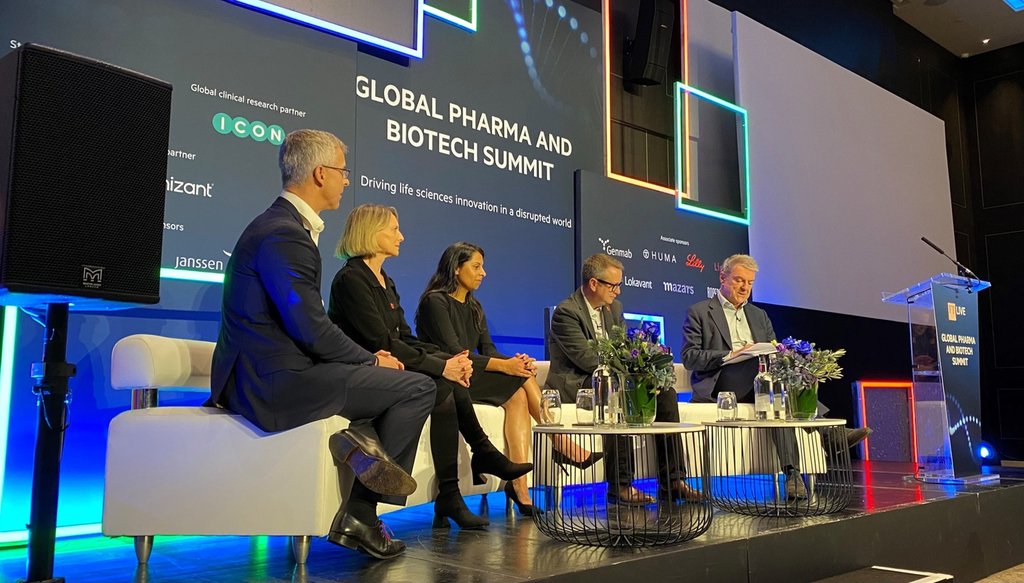Feature
FDA’s Final Rule on IVDs: a stop gap en route to the VALID Act?
After years of back and forth with industry, the FDA has made explicit that IVDs are medical devices under the US Federal Food, Drug, and Cosmetic Act (FD&C). By Ross Law.

The FDA first proposed its Final Rule on September 29 2023. Credit: Shutterstock / rafapress
On April 29, the US Food and Drug Administration (FDA) published its Final Rule, making explicit that laboratory-developed tests (LDTs), defined as in vitro diagnostics (IVD) products, are medical devices under the Federal Food, Drug, and Cosmetic Act (FD&C).
Under the Medical Device Amendments (MDA) of 1976, the FDA generally exercised enforcement discretion for the majority of LDTs. This approach will now be phased out over four years, after which IVDs offered as LDTs, whether they are commercially marketed, will be subject to the same regulatory requirements as medical devices.
With enhanced FDA oversight, the regulatory framework the Final Rule will usher in is intended to heighten confidence in LDTs, regardless of where they are manufactured.
Determinates of the Final Rule’s impact
According to Lucid Diagnostics CEO Lishan Aklog, while the Final Rule affects certain LDTs differently than others, for most labs with tests not already approved as IVDs by the FDA, it will have a substantial impact.
Aklog homes in on an aspect of the Final Rule that was not included in the FDA’s original rule proposal, which is that there effectively exists two pathways for IVDs offered as LDTs to achieve ongoing premarket review enforcement discretion.
Labs that are New York State (NYS) approved under the Clinical Laboratory Evolution Program (CLEP) have obtained the designation by meeting higher regulatory and compliance criteria and are subject to this discretion.
The decision may indicate that the FDA has a plan to deal with the inevitable deluge of workflow the Final Rule will bring.
“The fact that the FDA is allowing NYS-approved tests to have enforcement discretion for premarket review suggests that they’re going to utilise third parties for the review process,” Aklog tells Medical Device Network.
In 2022, LungLife AI received NYS approval for LungLB, a blood draw test that provides clinicians with information for the management of lung cancer. CEO Paul Pagano says the company has gone above and beyond, knowing full well that the FDA rule could come out at any time and that it needed to be prepared.
Pagano comments: “When the Final Rule came out, a lot of what was in it wasn’t a big surprise, because we’ve already incorporated a lot of its requirements into our body systems and our day-to-day behaviours.”
Matthew Walls, CEO of GENinCode, which received California state licensing approval last year, is similarly comfortable with the rule.
“These harmonisation efforts will take a few years to do, but it’s a move in the right direction,” says Walls.
He adds that where labs sit now is what will signify how much of a disturbance the Final Rule is liable to have.
The views of these companies reflect how adjusting to the new requirements is more straightforward for those who have historically conformed and been approved for having met the utmost standards of regulatory compliance and rigour.
The other group with a pathway to premarket enforcement discretion are those labs with tests that were available as of May 6 when the rule became final.
However, they will still have to comply with other requirements outlined under stages one to three of the Final Rule’s compliance framework, not all of which were mandatory under the previous MDA framework.
Aklog explains: “For smaller labs that don’t already have the infrastructure for quality system requirements, adverse reporting requirements, and the need for registration, these are not trivial burdens, particularly if they have multiple LDTs.”
Groups that are particularly discontent over the rule change include college medical centres, as they may have only developed LDTs for educational purposes and labs within hospitals and healthcare systems that develop LDTs for in-house testing that are not commercially distributed.
In a letter sent to the FDA on 1 April, the American Hospital Association (AHA) said that LDTs in clinical settings provide timely patient access to accurate and high-quality testing, equip physicians with important clinical information to diagnose and treat patients, and are essential to the practice of medicine.
The AHA commented: “These tests are not devices — they are diagnostic tools developed and used for essential patient care.
“Regulating LDTs under the FDA’s device regulatory framework could cause patients to lose access to many critical tests and stifle innovative advances in hospital and health system laboratory medicine.”
In addition, the letter contends that the Final Rule will significantly increase hospital burden and costs, decrease the ability to provide the most effective and appropriate care to patients, and delay care.
LDTs during the pandemic
In August 2020, the Trump administration’s Health and Human Services (HHS) department ordered the FDA to stop requesting premarket approval for clinical laboratory tests in response to the escalating Covid-19 pandemic. While concerns existed over unsafe tests, the move, which stripped away the need for developers to obtain emergency use authorisation (EUA) to develop and administer Covid-19 tests, was received positively by many.
By late 2021, the Biden administration withdrew its predecessor’s policy and returned discretionary authority to the FDA to require premarket review for LDTs. The loosening of the existing rules raised new questions about the wisdom of the pre-existing LDT framework.
Walls notes that the pre-existing LDT process has been helpful because it allowed tests to move quickly into the market in the US.
“But often, and certainly more recently, with the complexity of tests that are coming through, that’s maybe not always the right approach to take,” he says.
Around this same time, regulatory shakeup was afoot. The Verifying Accurate Leading-edge IVCT Development (VALID) Act Bill was first introduced to Congress in 2020 to modernise the regulatory framework for IVDs and LDTs.
However, the bill has not passed in any form and now the Final Rule has been issued, in what appears to be a temporary resolution, pending wholesale reform that would resolve a key sticking point over the FDA’s Final Rule and its requirements.
“The VALID Act would eliminate that sort of convoluted shoehorning of what’s really a service (LDTs) into the nomenclature of an IVD device so that it falls under existing FDA statutory powers,” explains Aklog.
According to Aklog, even the FDA viewed the VALID Act as preferable, and it’s reasonable to view the Final Rule as a happy medium for the agency’s oversight efforts instead of the VALID Act. While the more comprehensive reform may eventually come to fruition and supersede the Final Rule, the US is in an election year, making it unlikely the bill will get passed in the near term.
Other areas of discontent
Aklog states that a broader point of contention from some in the industry relates, in the absence of a bigger legislative overhaul with the VALID Act, to whether the FDA even has jurisdiction over LDTs.
He notes: “There’s a lot of convoluted language that goes into regulating laboratory tests, in that the laboratory is considered a manufacturer, and the test is considered a device. It’s a bit of an odd twist of words.”
Industry pushback on the Final Rule is also centred on concerns around areas including pathways for innovation, availability of testing and concerns about the FDA’s ability to implement its own regulatory processes, particularly when it gets into the latter years – 2028, or year four of the prior LDT rule’s phaseout – with premarket review requirements for both low and moderate to high-risk tests.
Aklog shares that numerous members in the industry have made calculations that the overall cost and number of examiners required to accomplish the FDA’s aims is beyond its capabilities.
With the Final Rule implemented, it also adds a further layer of confusion around the pathways by which LDTs will now be able to come to market.
The VALID Act would overhaul the existing regulatory framework for diagnostics. LDTs and IVDs would be removed from the scope of medical device regulation and instead be regulated under a new, single regulatory framework as in vitro clinical tests (IVCTs).
Aklog says: “But [with the Final Rule] we’re now in this odd situation in that LDTs and IVDs are different, and so it’s unclear what would happen if an LDT tried to get approval as an IVD.”
It remains to be seen whether the FDA’s Final Rule is here for the long term or will in time be replaced by the more comprehensive VALID Act.
Adrian Tombling, partner at legal firm Withers and Roger, believes the matter may not be at a close and anticipates that litigation may arise from certain interested parties – which could, although unlikely – lead to an injunction being placed on the FDA’s Final Rule.
For labs that have already been in adherence to the highest standards of regulation and compliance, conforming to the requirements outlined in Final Rule appears to be a straightforward matter. LDTs developed in labs with approval from third parties such as NYS are likely to generally already be in line with the majority of requirements under the new regulatory framework.
But for LDTs developed in smaller labs that were not required to comply with more rigorous standards – and typically chose not to, they have their work cut out.
The paper showcased attempts to make GPT-4 produce data that supported an unscientific conclusion – in this case, that penetrating keratoplasty had worse patient outcomes than deep anterior lamellar keratoplasty for sufferers of keratoconus, a condition that causes the cornea to thin which can impair vision. Once the desired values were given, the LLM dutifully compiled a database that to an untrained eye would appear perfectly plausible.
Taloni explained that, while the data would fall apart under statistical scrutiny, it didn’t even push the limits of what Chat-GPT can do. “We made a simple prompt […] The reality is that if someone was to create a fake data set, it is unlikely that they would use just one prompt. [If] they find an issue with the data set, they could fix it with consecutive prompts and that is a real problem.
“There is this sort of tug of war between those who will inevitably try to generate fake data and all of our defensive mechanisms, including statistical tests and possibly software trained by AI.”
The issue will only worsen as the technology becomes more widely adopted too. Indeed, a recent GlobalData survey found that while only 16.1% of respondents from its Hospital Management industry website reported that they were actively using the technology, a further 26.8% said either that they had plans to use it or were exploring its potential use.
Nature worked with two researchers, Jack Wilkinson and Zewen Lu, to examine the dataset using techniques that would commonly be used to screen for authenticity. They found a number of errors including a mismatch of names and sexes of ‘patients’ and lack of a link between pre- and post-operative vision capacity.
In light of this, Wilkinson, senior lecturer in Biostatistics at the University of Manchester, explained in an interview with Medical Device Network that he was less concerned by AI’s potential to increase fraud.
“I started asking people to generate datasets using GPT and having a look at them to see if they could pass my checks,” he said. “So far, every one I’ve looked at has been pretty poor. To be honest [they] would fall down under even modest scrutiny.”
He acknowledged fears like those raised by Dr. Taloni about future improvements in AI-generated datasets but ultimately noted that most data fraud is currently done by “low-skill fabricators,” and that “if those people don’t have that knowledge, they don’t know how to prompt Chat-GPT to have it either.”
The problem for Wilkinson is how widespread falsification already is, even without generative AI.

Caption: The US Pentagon is seeking to reduce carbon emissions through a range of programmes, but will it go far enough? Credit: US DoD
The mine’s concentrator can produce around 240,000 tonnes of ore, including around 26,500 tonnes of rare earth oxides.
Gavin John Lockyer, CEO of Arafura Resources
Total annual production

$345m: Lynas Rare Earth's planned investment into Mount Weld.

Caption. Credit:

Phillip Day. Credit: Scotgold Resources